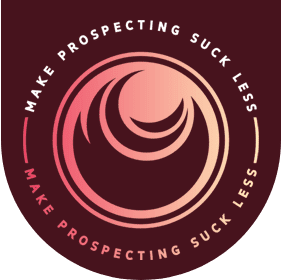
Why Prospecting Is Broken and How to Change It
Buyers are in a state of sales fatigue. The traditional sales approaches have become counterproductive to their goal, often disengaging prospects from the start.
Most people are familiar with and tired of automated templated sales and marketing emails, cold calls where the only goal is to get a meeting, and the sales pitch. Especially the elevator pitch. One executive recently told me that the elevator pitch was the sales equivalent of walking up to someone you’ve never met in a bar and asking, “Your place or mine?”
The results show it, too. Most sales teams are setting fewer appointments, experiencing more no-shows to meetings, not getting past the first meeting, and facing no-decision outcomes more often. Increasing activity isn’t having a significant effect either.
Calls, emails, text messages, and social media are still the right tools. It’s the order of operations and the desired outcomes that need updating.
So, how do we change this? We need to flip the script. In other words, we need to focus on the buying process instead of the sales process.
Businesses can adapt and reimagine the structure and tone of their messaging and develop a more conversational and humanized approach to connecting with clients and breaking through the sales fatigue. Instead of focusing on the outreach of your sales teams, look more at your buyer’s engagement.
Technology, the internet, and C19 have all contributed to the current situation, but the most significant reason this shift is necessary is who the buyers are today. They are, by and large, millennials.
73% of millennials work in B2B procurement positions, with one-third being sole decision-makers.
Millennials are digital natives. They were raised on digital technology and have been intimately familiar with computers and the internet from an early age. They consume information and solve problems through social media, blogs, industry forums, and consumer reviews. They seek out interactive product displays and FAQs, engage with chatbots, and prefer digital commerce.
Going forward, leveraging the power of social media will play a pivotal role in the sales prospecting process. It’s now one of the best sales prospecting methods available. Having detailed ideal customer profiles and an in-depth understanding of your personas will ensure you target who you want to interact with.
Social media provides unprecedented access to leads, allowing you to connect with them quickly and easily in an engaging and personal way. Sending a direct message or tagging someone in an industry-related post can be enough to start the conversation and make an impression.
Digital sales prospecting tools create an opportunity to understand the process better than ever before. Outbound sales platforms allow businesses to track and monitor the performance of their engagement in near real-time, making it easier to identify trends and determine which strategies are most effective. Businesses and sales teams should use all the data they have.
Additionally, using social media to research prospects gives you a better understanding of who they are, their needs, and their interests.
Cold calls won’t be so cold anymore. Now, calls are made to people who have engaged or connected with you on social media. You may have gotten them to visit your website, check out your products, or even sign up for a newsletter. These calls are no longer introductions. They jump right into your prospect’s needs and how the features and benefits of your product meet them.
Send highly individualized emails. In a world where the value of one-to-one connection is more important than ever, individualized emails are highly effective. Modern platforms are very sophisticated and allow sales teams to send these messages easily.
Build out your process. No matter how great your sales team is, they won’t be able to achieve success if they don’t have a process.
As things get more competitive, it will be essential to have a streamlined, repeatable framework for social selling.
The process should be tailored to your target audience’s needs and consider any feedback from prospects.
It’s important to keep the process simple and include essential steps such as creating awareness, building interest, product information and demonstrations, FAQs, customer success stories, and identifying new growth opportunities.
Establish a follow-up process to nudge your prospects. Following up maximizes your chances of success by complementing the effectiveness of your individualized call and email campaigns. Even the most carefully crafted initial email can get lost in the prospect’s inbox or slip their mind. This is why including a series of well-timed follow-ups in your outreach strategy is essential.
Finally, don’t forget to review these processes regularly.
This is an exciting time for prospecting strategies in sales, and your business needs to stay ahead of the curve.
The most effective salespeople today don’t look like salespeople at all. They look more like industry experts who aren’t focused on sales but on growing, educating, and engaging their audience. They spend their time connecting, building relationships, and providing information in a manner the buyer wants.
I hope you enjoyed this edition. The next edition, two weeks from now, will cover how to use videos to sell effectively.
